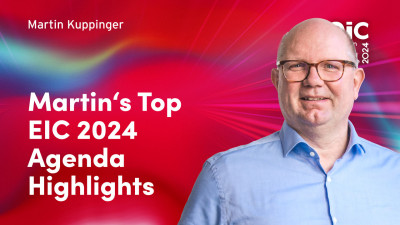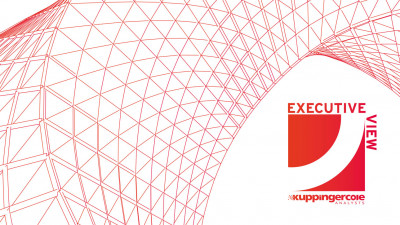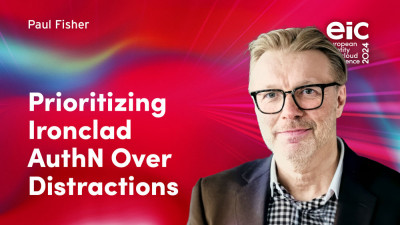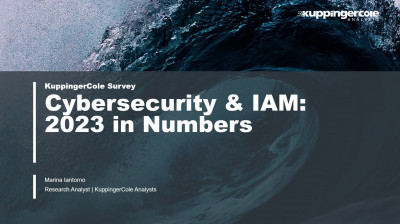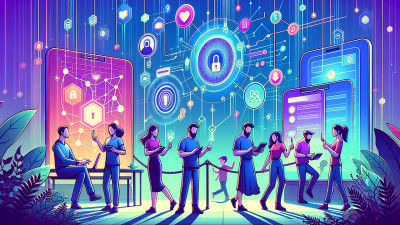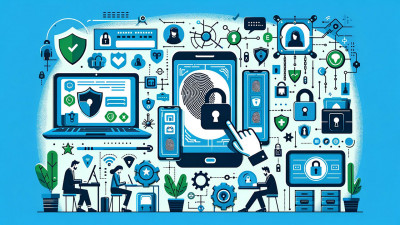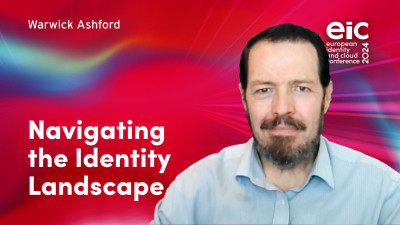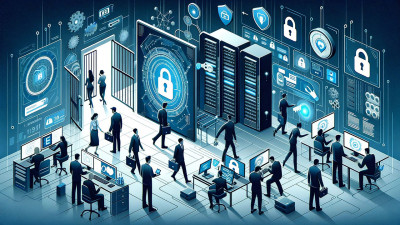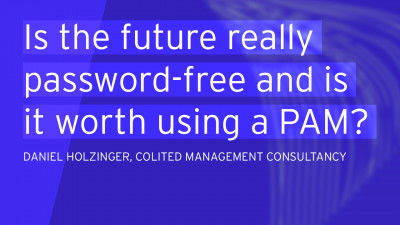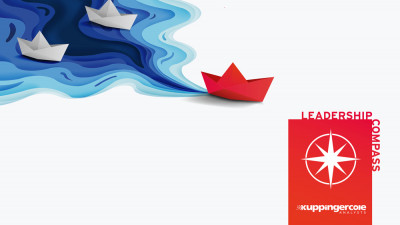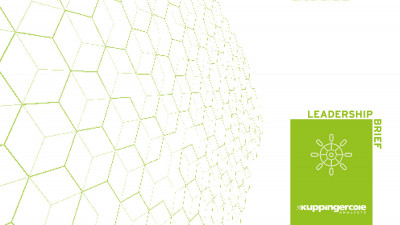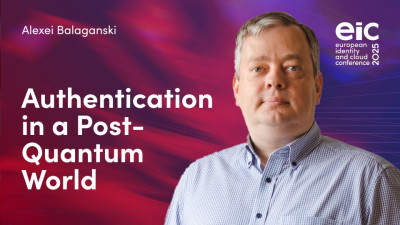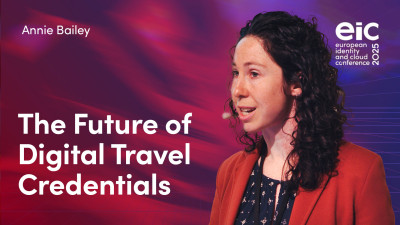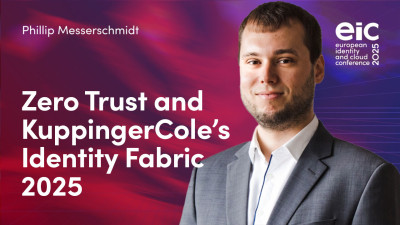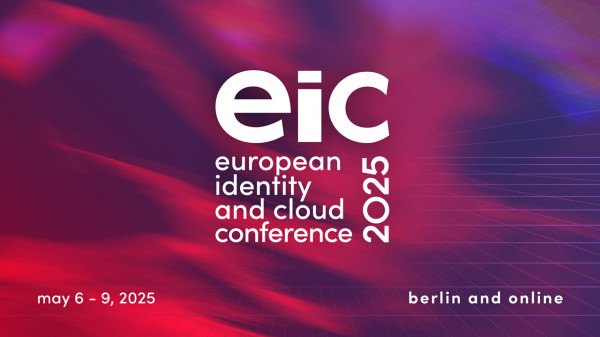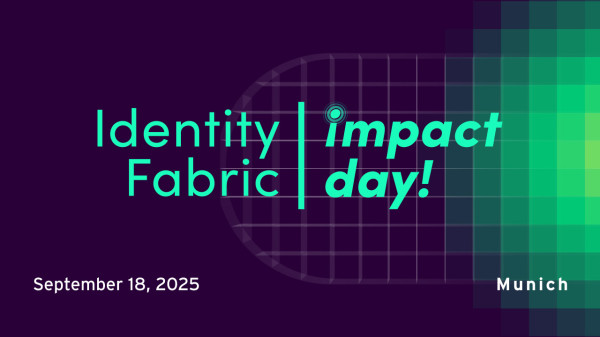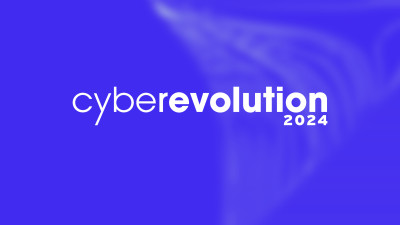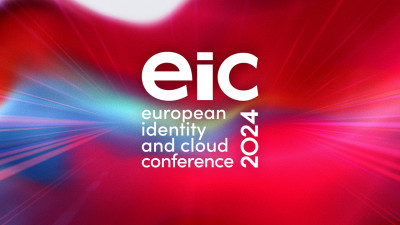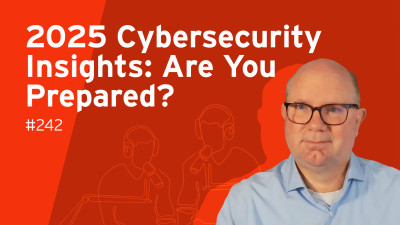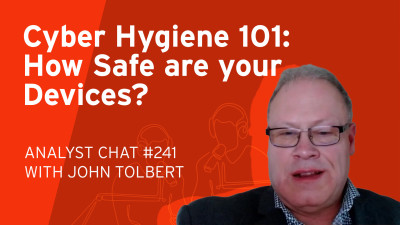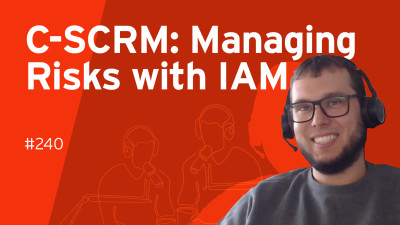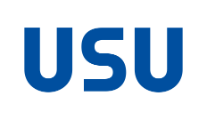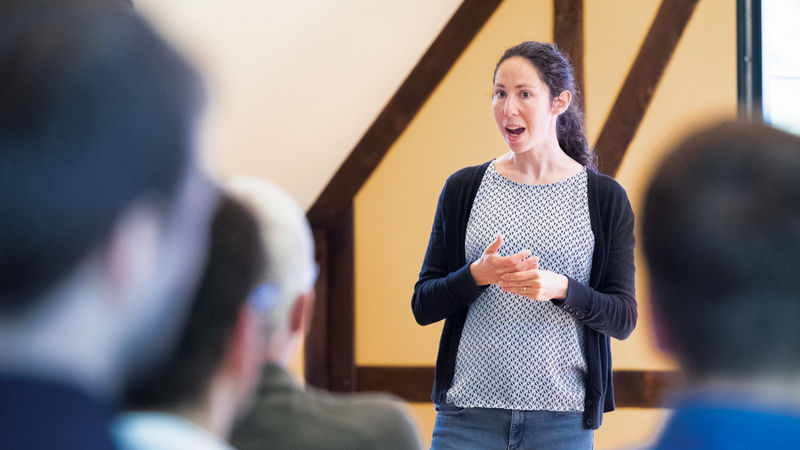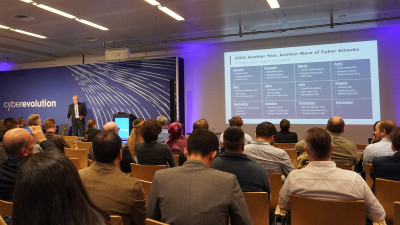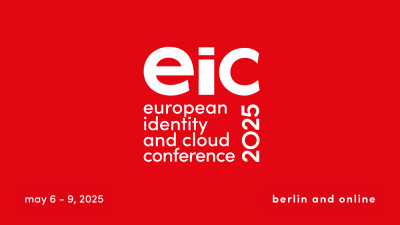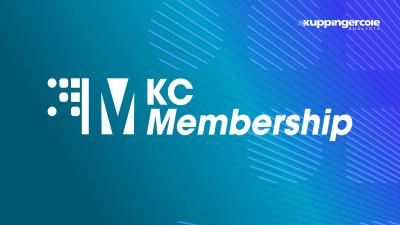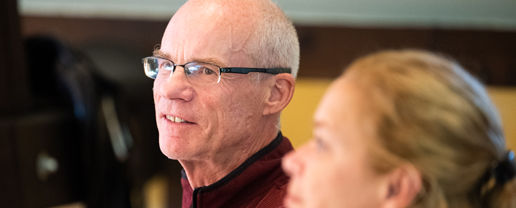Oh, thank you so much for joining me today for this topic. And if you were in the disinformation chat this morning, we had a fantastic discussion that leads right into where we're going today. So I'm Joni Brennan, and if you don't know me, I've been working in the nonprofit association identity management standards and development space for more than 20 years.
The reason that I do this work is, I think the same reason many of you do this work because I care deeply about people protecting personal data, putting people in control of their data, and putting dignity into how we interact with technology. So with that, we're gonna talk about misinformation, disinformation, and malformation. I'm gonna call it MDM for short 'cause that's a lot to say through my entire talk. So I'm gonna start us off with two data points today.
First data point is in December of 2021, the Prime Minister of Canada put a, made a national priority for Canada's federal government to establish a digital identity platform that all Canadians could use.
And in March of 2022, I officially became a Canadian citizen. Hooray. So let's talk about how MDM ties these two pieces of data points together and where that's gone forward and what the effect has been on adoption for digital id.
So taking us back to 2022, I think we remember it pan in and out of the pandemic, a lot of uncertain, a lot of lives were on hold, there was vaccine hesitancy, looming financial crisis. Many of this is even in fact, true for today. And if I had to pick one word to sum this all up, I would choose uncertainty. We had a lot of uncertainty in our world and a lot of unanswered questions, and we didn't know what information to turn to. And in that dark space of uncertainty, it gave lots of room for conspiracy theories to run wild, and they still run wild today.
And in February of 2022, a very popular North American podcast host you might know, had on a guest who put forward a conspiracy theory that Canadian financial institutions were establishing digital id. And that was the goal end goal of tyrants. Very soon after that, we started to see images like this on Twitter going around, putting forward that digital ID would cause more identity theft, that it was the ultimate goal to have a surveillance state that we would have that it, it was the goal of tyrants to have a cashless society and a social credit system.
Soon after that on Twitter, we started to see at home investigators going through our website highlighting key pieces of information that they believe to be important, indicating that we would have this system and that we would, we're establishing a, a social credit system in the Canadian ecosystem. So this this really round wild, let's talk quickly about what MDM is.
Misinformation is false information, but no harm is intended. Disinformation is false information, but harm is intended and malformation often stems from truth but can cause harm because it exaggerates that truth.
Ms MDM targets often differences between social groups, political groups, cultural groups, and it tries to use those differences to divide and to destabilize ecosystems. It tends to target linguistic and diasporic minorities, and it also tends to disproportionately target women often trying to shame them in social, political or public arenas through doctorate images, DeepFakes and other. Now in Canada, what are the social impacts?
Well, 96% of people who who were surveyed by Stats Canada said that they believe that the information they found online about covid, they believe that was often false. And nearly 300 Canadians lost their lives due to covid vaccine misinformation. 3000 Canadians nearly lost their lives to, to covid vaccine misinformation. And 300 million was lost in 2022 due to fake crypto scam ads that often used false celebrity endorsements. And even Elon Musk deep fakes, I know, can you believe it? But misinformation is not a new and, and distrust of information is not new.
In, in 1845, Edgar Allen Post said, believe none of what you hear and only half of what you see. But obviously, he wasn't alive during the unauthenticated web and social media.
So let's look at how MDM spreads over social media during a crisis. On the good side, it helps get information out faster, can reduce damages, can get resources to those who need it faster. But on the bad side, oversight is low and often misinformation and disinformation isn't dealt with until it actually gets out. Echo chambers are a huge problem.
These echo chambers help information spread disinformation spread even faster, which makes correcting that information very difficult. Now, the downright toxic super spreaders are responsible for spreading the mo. A small group of super spreaders are responsible for spreading most of this MDM and of course, algorithms while they boost anger inducing content for engagement. So that increases the impact of this small group of, of informa of MDM spreaders.
So this takes us to March of 2022, where a far right wing, our far right wing party political leader shared this tweet online and four of the faces are blocked out and one of them isn't because that one's mine in my home office.
And you can see that what was being put forward was that a particular political party was using digital ID to hunt down unvaccinated people. And if you clicked on this link behind, you got my name, you got our organization, which is basically doxing, which set off a, a threat and, and a threat and and harassment campaign that continues right through to this very day.
So you can imagine it, the harassment runs from the downright silly being a political wanting to be a dictator. Maybe that's true, but even on International Women's Day claiming that I'm not a woman and that they would like to find images to doctor, to harass. So do you remember that key point about women being disproportionately targeted? This is absolutely true, and all of us in this space have to be careful about this.
So the cognitive dissonance that the online world creates with the world that we live in, where we come here we are the people who care about this problem and are trying to make it better, we're also targets of this, of the misinformation and disinformation ecosystem.
But the consequences are far reaching. So as this was happening in Canada, in April of 2022, provinces started to cancel their digital identity programs or not speak about them at all. Our conservative opposition government claimed there will be no digital Id later softened into no mandatory digital id.
And that prime minister who set that letter in December of 2021 accused the conservative party who wants to use age verification to verify people to access porn sites. Now the same prime Minister says they stand firmly against the idea of digital id. So what's hiding in plain sight in the room? Of course.
Well, we've been talking about it all morning, ai, the ease and simplicity of making shallow fake fakes, deep fakes, live fakes. Is it any wonder people have no trust in what they see online and and, and are and are highly distrustful? Is it any wonder that people are just looking for authenticity?
They wanna know that what they're accessing is of undisputed origin, that it's genuine? I would almost argue that au the ability to prove authenticity is the new identity. So what is DAC doing about this?
Well, we're an adoption accelerator and we've developed a certificate, a risk management scheme, and a certificate, and we're a certification body to verify against that scheme. We're a public and private sector organization, and we're actually focused on the digital economy and making benefits range for all. So what we've done this basis, we've done public research, and what we do find is that when people understand the words digital id, the majority support it, 23% are insurer and 22% are highly skeptical.
So we're focusing our education on those 23% who are unsure, and we put together a every two year forum that is called the Public Trust Forum, where we bring together skeptics, neutral parties and enthusiasts so that we can see debate, seek consensus, somewhere the public trust gaps exist, and prioritize recommendations that will help create impact and inform and identify outcomes so that perceptions are informed.
We're grateful to the leaders who have sponsored this work to make this report possible.
So I've got five key recommendations from our public trust form for every organization who cares about building the public trust that is necessary to drive adoption forward. One is we can't wait for universal consensus on this thing called digital id. People don't understand it and universal consensus will never come. So committing to its use, being voluntary, it's something that we can choose to use, is a very important feature. Two for us in North America and our confederated governance break transformation down into smaller blocks.
A massive national or international strategy is challenging for us. So smaller blocks on the way forward is something that works in our ecosystem. Invest in education. While we are talking about standards and technologies and how these pieces fit together, we have to remember that people don't understand what we're talking about.
So we have to invest in education so that the public can understand what the benefits are.
And absolutely, and this is hard for me to do, but move away from the words digital ID when speaking in public use that internally its use will be contextual, but at worst it's inflammatory at best. It's often confusing for the listener. Stick with terms like verify, credential and authenticate. They're more targeted for what we're doing in Diac. While we're undertaking just that a simple, we call it Tim Horton's, that's a local coffee shop, a simple Tim Horton's language campaign to talk about the benefits of what it is we're doing.
How will this help people in their everyday lives and put them more in control of their data, focusing on finance, business, public safety, and how it helps for service delivery. We're continuing that public-private collaboration without public-private collaboration, we don't have checks and balances.
So that's paramount to our way forward.
We're bringing concepts to life and policy debates, helping people to understand where and how digital ID and all the things that we love to do will put people in control of their data, help them to have that dignity that they're looking for and why they're so, and solve some of those issues of why they're so distrustful today. And building more frontline partnerships. We know that trust does not scale.
So working with organizations who have sets of customers or universities who have students and faculty worked to bring this storytelling through a network so that the trust can be distributed to people who are more familiar with organizations that they work with. Because in 1913, Lewis, Brenda said, sunlight's the best disinfectant. He was really talking about adding transparency to what governments are doing. And by bringing that transparency, the public will have more trust in the government's operations, but some people don't know.
The second part of that saying, which is electric light is the best policeman now at the time, electric light was being invented and cameras were being invented. And so what Lewis was actually calling for here was for governments to urgently work together to build in innovation, to understand the potential harms of the electric light and of cameras so that the policy would reflect the potential harms of of these new inventions. And all the policy makers got together and they did. And now policy fits perfectly with every new innovation that we have. The end. I'm done.
No, no, no, no. I'm not done. I'm not done. I'm not done.
I, I, I got, I kid you. So what are we doing to advance this space? We've built a risk management framework and this risk management framework helps to close the gap. Adopters have a right to know that their potential harms have been identified. Solutions help to solve those problems. And the work that we've defined in the Pan-Canadian Trust framework is a risk management framework to codify all of the pieces and parts together of how solutions meet the needs of their customers and their clients.
What it looks like in operations is a set of audible criteria based on the type of capability that you're providing. For this group, I would highly recommend looking at the trust registries component and the digital wallets component because I think that's gonna be, give you some good guidance on what outcomes these tools should achieve.
Again, being in a technology neutral way, all wrapped in privacy and infrastructure and how these pieces go together. So we've built a third party certification program around this. We accredit information security auditors, rec recognized readiness advisors and certified services.
So, and finally, we're operating a trust registry ourselves of certified organizations and we're very proud for the first organizations to go through this program. One is a TB ventures and their solution. So this is facing the financial sector needs and those helping to reduce the, the friction in those use cases and Chicago title because in the real estate ecosystem, we know there's a lot of fraud and their pro and their service verified ideas helping to meet the needs there. So I'm really thrilled that we've got to spend the time today together.
And if there's one thing that I wanna prioritize in this talk is that while we're going through all the details on technology, on how protocol and how SSI, how these pieces fit together, we need to also prioritize people because without their trust, we can see that projects will not go forward and we won't get that.
We won't get that pervasive adoption that we're looking for.
So we need to invest in education, we need to speak in simple language that that meets the listeners where they are, whether that's my mom or a minister of a government department in our government, it's almost the same audience. And then we need to de, that wasn't meant to be funny, but it was. And we need to de-risk adoption.
And I, I would say absolutely leverage trust frameworks. The diac has won the Pan-Canadian Trust framework. There are other organizations with trust frameworks around. We do get in rooms and talk about how we can find equivalent equivalencies with these trust frameworks. So that's gonna be one of the pieces for Martin's puzzle that he showed this morning to help bring a common level of trust to this ecosystem where there will be many solutions.
Finally, this was a hard talk for me to put together today because it had some personal information and the way that I got by with a little help from my identity friends and I happen to be on the board of ID pro. And if you don't have enough identity friends, I highly recommend you go look at the ID Pro Association. You'll make lots of identity friends there if you do so. If you are interested in these topics and you'd like to talk about them more, please get in touch with me.
Again, I'm Joan Brendan Brennan, president of the Diac, and I'm very passionate for this work and I'm so honored to be with all of you and with the EIC because I know that you're as passionate as I am to solve problems and help people. Thank you.
Thank you. Well.

